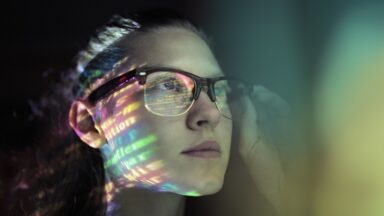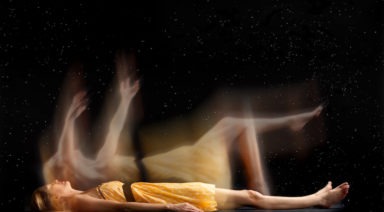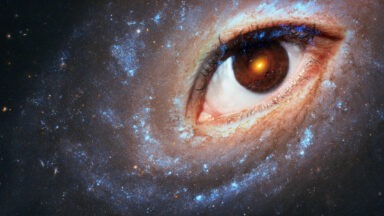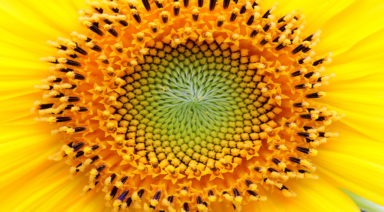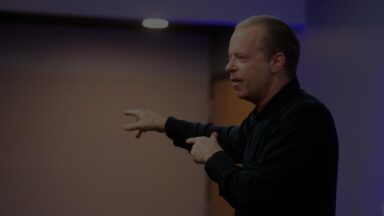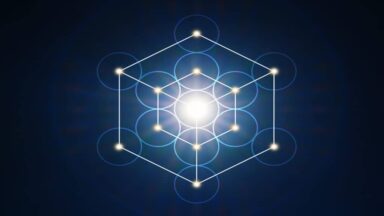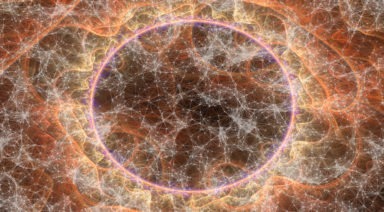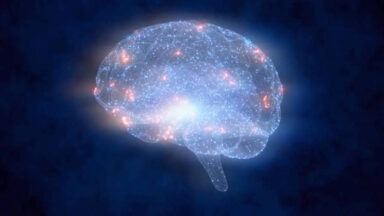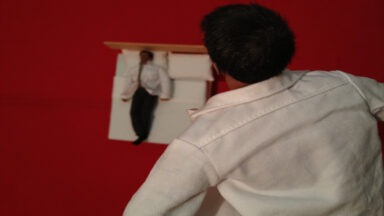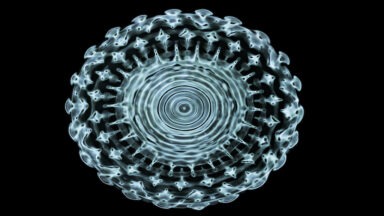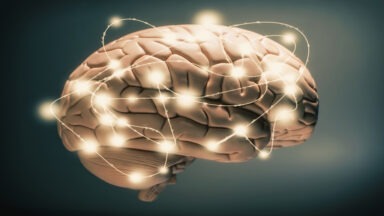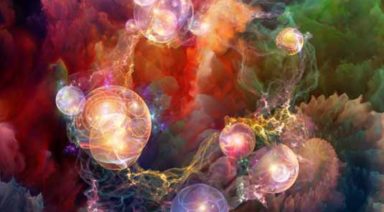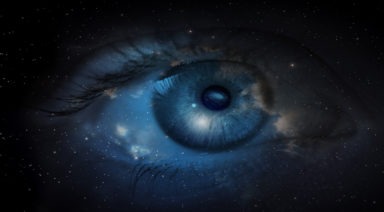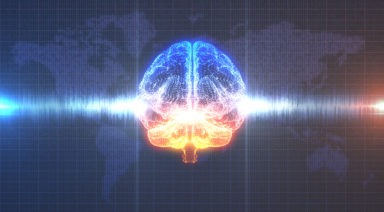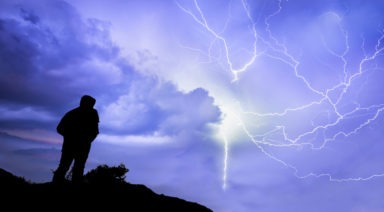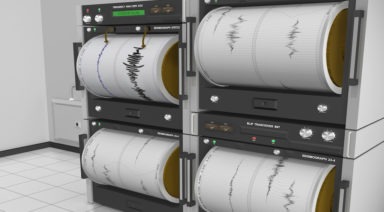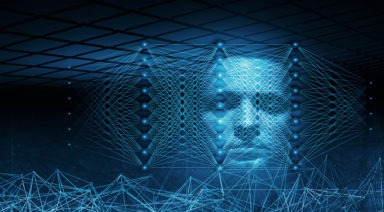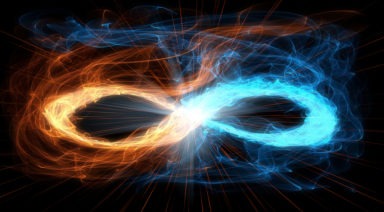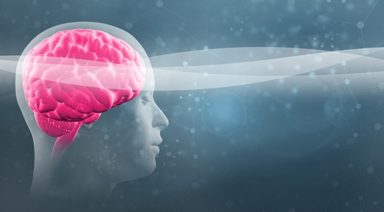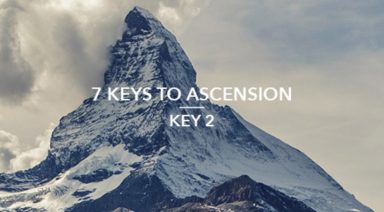Scientist Explains What Happens When People Channel

When you hear the word channeling, what comes to mind? Many of us would think of Bashar, Seth, Barbara Marciniak, Edgar Cayce, etc. In other words, most people think of trance channeling, where a person allows a supposed entity (deceased spirits, aliens, angels, higher self, etc.) to use their body as a vehicle to communicate.
I am a trained clinician, naturopathic physician, and Director of Research at the Institute of Noetic Sciences. I also happen to come from a long line of trance channelers and received a BIAL grant for researching the physiological effects of full-trance channeling:
As someone who bridges the worlds of scientific inquiry and the esoteric, I have a more encompassing definition for channeling:
“Channeling is the process of revealing information and energy not limited by our conventional notions of space and time that can appear receptive or expressive.” – from The Science of Channeling
One of the most confusing things about channeling is its name. Many people associate it with trance channeling. Others use it interchangeably with terms like psychic, medium, psi, ESP, etc. When I first engaged in conversation with people about these phenomena, I found that the terms meant different things to different people.
For example, as a naïve new researcher in the field, I formally reviewed the literature to understand the terms used for trance channeling. There were 29 different terms used to describe this form of channeling and the people who do it.
Multiple research studies show that channeling is experienced on a spectrum. On one side, you have widespread experiences like intuition and gut hunches. Telepathy, clairvoyance, and precognition lie somewhere in the middle. Rarer experiences like trance channeling and out-of-body experiences are on the far side of the spectrum. Channeling comes in so many forms.
At IONS, we call your unique way of channeling your Noetic Signature™. There is no right or wrong signature. All are beautiful and unique. Just as each snowflake is different yet equal in its exquisite beauty, each person’s Noetic Signature™ has inherent value.
An Overview of Channeling
In my book, The Science of Channeling: Why You Should Trust Your Intuition and Embrace the Force That Connects Us All, I share about the IONS Channeling Research Program and what we’ve learned by investigating these research questions:
- How common is channeling, and what are its characteristics?
- How does channeling work?
- Are there defining characteristics of someone who channels easily?
- Can we verify the information?
- Is the content useful?
In this blog post, I’d like to share an overview of these findings with you. You can also watch a video about some of our findings here.
How Common Is Channeling?
Not only are channeling abilities found in perfectly healthy people, but the experience of channeling is actually quite common.
In another study conducted by IONS, we surveyed scientists, engineers, the general public, and IONS members about their channeling experiences. We were surprised to find that of the 900 participants, a whopping 90% (93-99%) had at least one channeling experience in their lifetime.
This suggests that channeling experiences are common. In fact, Rapoport, Leiby-Clark, and Czyzewicz put out a survey each year to gather information on the number of Americans that believe in paranormal phenomena. What’s interesting is that this number has increased year over year.
One overarching theme in parapsychological research is that the more we believe in phenomena, the more likely we are to experience them. This could account for that growing number. That being said, some channeling experiences are more common than others.
I think of channeling as being like a spectrum. On the subtler side, people experience clairempathy, claircognizance, lucid dreaming, and telepathy. Somewhere toward the middle are precognition and mediumship. And at the far end of the spectrum are rarer experiences like trance channeling, geomancy, psychic healing, pyrokinesis, and levitation.
Is Channeled Information Real?
Channeling may be common — but is it real? “Real” would mean that channeling can be observed with objective measures rather than just anecdotal accounts.
Jessica Utts published an interesting statistic in a study featured in the Journal of Scientific Exploration. She showed us that the effects observed in ESP research are significantly larger than the effect size of 81 mg of aspirin therapy.
In other words: Many channeling phenomena appear to be very real.
Some evidence for channeling can be found in the work of Rupert Sheldrake. Sheldrake has compiled a database of 4,000 case histories, 2,000 questionnaires, 1,500 interviews, and more than a decade of controlled experiments — all of which indicate that consciousness is nonlocal and fundamental. He and many other scientists have conducted direct mental interactions with living systems (DMILS) experiments that show us a person (the sender) can remotely influence another person’s (the receiver’s) physiology.
In these studies, a sender directs positive intention toward the receiver. Both participants’ bodies are measured for physiological changes. The results are consistent: Small but significant effects can be observed in the physiology of the receiver. DMILS is probably why, for example, we can sense when someone is staring at us.
And yet the evidence for channeled information goes beyond any individual study. In the scientific world, a meta-analysis is the pinnacle of proof. A meta-analysis looks at general trends across many studies and yields an integrated result. These types of analyses are critical because they give a more precise estimate of effect size and may give us conclusive results where individual studies cannot.
Meta-analyses related to channeling illustrate that the evidence for psychic experiences are comparable to that of established phenomena in psychology.
So yes, we have good reason to believe that channeling is real. Which leads us to yet another question: How does channeling work?
How Does Channeling Work?
At this point, no one is sure exactly how channeling works. We understand bits and pieces but more research is needed.
Relative to other branches of science, psi research is notably lacking. On the one hand, this is exciting: Psi is a relatively untapped frontier. On the other hand, the field is underfunded. Additionally, these topics remain taboo in the scientific community.
With little funding (and the genuine possibility of staking one’s career), few scientists are willing to commit their time and energy to psi research (even though, behind the scenes, many are interested in this field!).
In any case, we are in the infancy of our understanding of extended human capacities. Right now, we just have ideas.
It appears as though channeling transcends time and space because the effects of psychic phenomena are instantaneous. For example, in Random Number Generator (RNG) studies, a generator produces random numbers. And yet, when a person directs their attention to the generator, the numbers become less random.
How is something like this possible?
All of parapsychology hinges on the idea that consciousness is nonlocal and fundamental; therefore, everything is interconnected. It’s as though we can all tap into a consciousness larger than the one we experience in our day-to-day life.
It also appears that our abilities to tap into this consciousness are limited by external stimuli. This is why meditation is often used to cultivate intuitive abilities: It’s about learning how to shut out the noise.
Where Does Channeled Information Come From?
We don’t understand all the mechanics of channeling yet…and we’re not sure where the information is coming from. We conducted a survey among channelers where participants were asked what they thought the source of their channeled information was. They were able to choose as many options as they wanted:
56% of participants thought the source of channeling was their higher self;
50% said the universal mind;
47% said the unconscious mind.
Fewer people reported channeling spirits, ETs, deities, or other entities.
Common Traits of Spiritual Channels
In our research, we have found that certain characteristics lend themselves to channeling.
First of all, believing that you can channel predicts that you will have more channeling experiences and do better on laboratory tests. In studies done in the West, women report stronger and more frequent experiences than men. This may be because women tend to carry more yin qualities. Yin is feminine energy. It is open, receptive, and connected. In these western studies, channelers also tend to describe themselves as “spiritual but not religious.” Other demographic information, such as age and race, have mixed results.
That being said, we believe that everyone can learn to channel.
What is your unique way of channeling? If you’re interested in discovering or further cultivating your channeling abilities, you can order a copy of The Science of Channeling. In it, I’ll show you how to identify and hone your own channeling skills, process the information you receive, and use your unique gift to improve your life — and the world around you.
Is There Any Danger in an Akashic Records Reading? Myths and Truths

In recent years, the practice of accessing the Akashic Records has gained great popularity in the spiritual world, yet it is not without question. For some, they represent a source of guidance and healing; for others, a terrain full of unknowns and risks. In this article we explore what the Akashic Records really are, analyze their reliability and debunk some of the most common myths surrounding them.
Table of Contents
- What Are the Akashic Records?
- Are the Akashic Records Reliable?
- Myths About the Akashic Records
- Benefits of Opening the Akashic Records
- How to Safely Approach the Akashic Records
What Are the Akashic Records?
The Akashic Records are an energy field that stores the universal memory of all that has happened, is happening and could happen. They are often described as a “spiritual library”, accessible to those seeking guidance, healing and a deeper understanding of their life and purpose.
This concept is based on the idea that everything in the universe is interconnected, and that this energetic network records every thought, emotion and action. Accessing the Akashic Records does not involve a physical act, but a spiritual connection that is achieved through techniques such as meditation, sacred prayer or guided visualization.
The Akashic Records are a valuable tool for self-discovery and spiritual growth. By connecting with this source of wisdom, it is possible to gain clarity on personal patterns, resolve important doubts and work on emotional or energetic blockages.
Are the Akashic Records Reliable?
The Akashic Records are a reliable source of spiritual wisdom due to their high vibrational nature, based on love and light. This energetic field is designed to provide clarity, healing and guidance, aligning the information received with the highest truth and well-being of the querent. More than a common tool, they represent a safe and secure space to explore the path of the soul.
For those who approach them with respect and clear intention, accessing the Akashic Records can be profoundly revealing. It is often questioned whether there is such a thing as “what’s wrong with the Akashic Records,” but this perception is often based on myth or misinformation. By operating in a protected spiritual environment, there is no room for negative interference or risk to the integrity of the querent.
The reliability of this practice lies in the preparation and focus with which it is performed. Rather than predicting the future, the Akashic Records offer a safe space to explore the soul’s purpose and life dynamics from a broader perspective. They are a powerful tool for those seeking clarity and spiritual growth.
Myths About the Akashic Records
Although the Akashic Records are a highly valued spiritual tool, there are many myths that generate doubts and uncertainty. Some fear possible risks or dangers in accessing this “library of the soul,” but most of these fears stem from misunderstandings or misinformation. Below, we debunk some of the most common myths:
- It is possible to be trapped in the Akashic Records: This is false. Accessing the records does not imply leaving the body or losing consciousness; you are always anchored to your physical reality.
- Negative energies can be encountered: The Akashic Records are based on frequencies of love and light. There is no room for malicious energies in this high vibrational field.
- Accessing records is hazardous to mental health: When done with clear intention and adequate preparation, the experience is often healing and enriching. Difficult emotions that may arise are designed to guide your growth process, not to harm you.
Demystifying these ideas allows us to understand that the Akashic Records are not dangerous nor do they represent an inherent risk. If approached with respect and awareness, they can be a safe and transformative resource on the spiritual path.
Benefits of Opening the Akashic Records
Opening the Akashic Records can offer profound benefits for those seeking answers and guidance in their lives. This connection to a universal source of wisdom allows for a broader understanding of the soul’s purpose and the meaning of lived experiences. Some of the main benefits are:
- Spiritual clarity: The Akashic Records help you understand the purpose behind situations in your life. This brings a broader view of challenges and important decisions.
- Emotional healing: Accessing the records can help you release trapped emotions, heal past hurts and move forward more lightly.
- Understanding karma: The records offer insights into repetitive patterns and how they may be linked to past lives or unresolved experiences.
- Connecting with intuition: By accessing the records, you strengthen your ability to listen to your inner voice and follow your intuition with confidence.
- Improved relationships: You will gain a deeper understanding of the dynamics with the people around you, fostering forgiveness and empathy.
- Stress relief: The guidance received can bring mental and emotional calm, allowing you to face problems with greater serenity.
- Self-knowledge: The records provide valuable information about who you are and what your mission is in this life.
These benefits make the Akashic Records an invaluable tool for those seeking to grow and evolve from a place of self-understanding and inner peace.
How to Safely Approach the Akashic Records
If you are beginning your journey into the Akashic Records, it is natural to want to do it in a safe and reliable way. For those who are new to the practice, it is best to turn to someone who can guide you with professionalism and respect. Choosing the right reader is crucial: look for someone with experience, positive references and an ethical approach to their work.
During the consultation, it is important that you feel confident and comfortable. A good Akashic Records reader will establish a safe energetic space and explain clearly how the process works. He or she will also answer any questions you have before you begin, making sure you are in tune with the experience. The quality of the session will also depend on you approaching it with a clear intention and well-formulated questions focused on guidance or healing.
You can also have an enriching experience through an online Akashic Records reading. This modality is just as effective as a face-to-face session, as long as the reader is reliable and professional. Technology gives you the possibility to connect with readers from different parts of the world, making it easier to find someone who resonates with you and fits your spiritual needs.
Although starting with the guidance of an experienced reader is recommended, you may eventually feel the need to learn how to open your own Akashic Records. This step can be a deeply enriching experience, as it allows you to connect directly with this source of wisdom. However, it is important to do it from a place of responsibility, respecting ethical principles and adopting regular practices that help you tune in to its energy.




